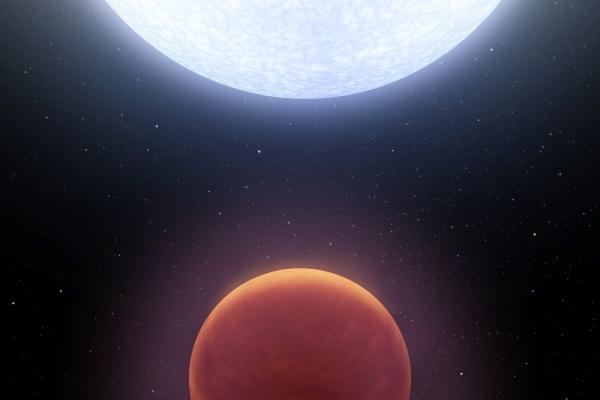A planet hotter than most stars

Astronomer Scott Gaudi, Thomas Jefferson Professor for Discovery and Space Exploration, co-led an international team that has discovered the hottest planet known. The team has been tracking the distinctly odd planet since mid-2014. The planet, KELT-9b, is “so hot it stretches the definition of the word ‘planet,’” Gaudi says. The star that the planet orbits is called KELT-9. It is found about 650 light years away from Earth in the Cygnus constellation.
With a day-side temperature of 4,600 Kelvin (more than 7,800 degrees Fahrenheit), planet KELT-9b is hotter than most stars, and only 1,200 Kelvin (about 2,000 degrees Fahrenheit) cooler than our own sun.
In this week’s issue of the journal Nature and at a presentation at the American Astronomical Society spring meeting, an international research team led by astronomers at The Ohio State University and Vanderbilt University describes a planet with some very unusual features. The system was discovered using the northern-hemisphere Kilodegree Extremely Little Telescope (KELT-North).
